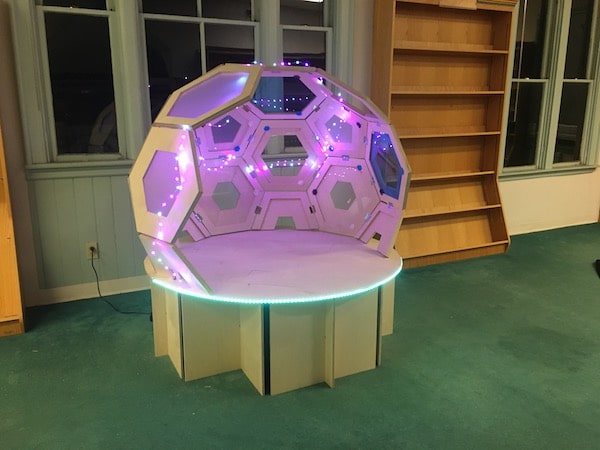INVENTION, INTELLECTUAL PROPERTY AND BUSINESS MODELS
This week I learned about licensing my work and marketing my final project for the future.
Copyright and Licensing
During our lab time, Professor CC Chapman came in to speak to us about licensing, copyright, and business models. One tool he discussed was Creative Commons which people can use to manage to copyright terms on their work. Creators can apply a Creative Commons license to their work if they want to give other people the rights to share their material, under various conditions. It's important to respect these licenses and give proper attribution to others people's work. This helps enable the free distribution of content.
Creative Commons offers several types of licenses, with features that offer different levels of protection:






- Attribution 4.0 International (CC BY) - This allows people to share and adapt a work, even for commercial purposes, as long as they give credit to the creator. It's great for if you want people to be able to build off of your work, but still be recognized for your original contribution.
- Attribution-ShareAlike 4.0 International (CC BY-SA) - This license has the same features as CC BY but with the added condition that resusers must license their adaptations under the same terms, meaning that any modified work must stay open for future users. This is good to have if you want your work to always be available, no one will be able to "cut off" your work from future users.
- Attribution-NonCommercial 4.0 International (CC BY-NC) - This is also the same as CC BY, minus the commercial use. Reusers are not allowed to use this licensed material for commercial purposes. So, if you don't want people to make money off your work but you're fine letting them use, share, and change it for noncommercial reasons, choose this license.
- Attribution-NonCommercial-ShareAlike 4.0 International (CC BY-NC-SA) - This lets people distribute and adapt content for noncommercial purposes. Also, credit must be given to the creator, and future versions of the work must be shared alike.
- Attribution-NoDerivatives 4.0 International (CC BY-ND) - Under this license, people can share the material in any medium, even for commercial purposes, as long as credit is given to the creator. However, if they modify or build on the the work they can no longer re-distribute it. This is a particular license for if you're ok with your work being shared and sold, but you don't want people the edit it.
- Attribution-NonCommercial-NoDerivatives 4.0 International (CC BY-NC-ND) - This is the most restrictive CC license. It has the same features as CC BY-ND, expect that the content cannot be used for commercial purposes. So, people can redistribute work in any medium, but they cannot change or build off of the work, and credit must be given to the creator. This license would be preferred by someone who really wants their work to be their own, where people cant change or sell it.
In addition to these licenses, Creative Commons has a Public Domain Dedication tool (CC 0) where essentially authors give up their copyright to put their work in the public domain. Users are free to share, change, sell these materials without any conditions.
After discussing these options with my project partner, we decided to use a Creative Commons Attribution-NonCommercial-ShareAlike 4.0 International License because we are ok with other people using and building on our project for the seating pod, and we want that to continue after someone else shares our work. I was unsure reusers selling our work, and since that's not something I can totally reverse in the future, we went with the noncommercial feature.

Future Plans
My final project is specifically intended to go in the Wheaton Fab Lab. I don't have an interest in marketing or commercializing it, since I view it more like a one of a kind furniture piece designed for the space. I don't intend on building or selling more of these Hexapods myself, but since I have recorded the process of making the seating pod on my website, I can imagine other people building similar stuctures, perhaps for their Fab Labs! Maybe this can become typical Fab Lab project where members use my process to help them build their own Hexapods. This could happen by posting images of the Hexapod, and links to my website, on social media and sharing these posts around the Fab Lab network.

Resources
Updated: June 17, 2021